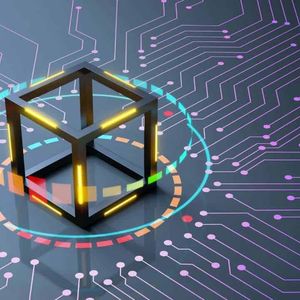BitcoinWorld ChatGPT Updates: Unveiling Breakthroughs in the AI Chatbot Race Few technologies have captured global attention quite like ChatGPT. Since its debut in late 2022, this AI-powered chatbot from OpenAI has rapidly transformed from a novel tool for writing and coding into a dominant force in the technology landscape. With hundreds of millions of active users, ChatGPT is not just a product; it’s a phenomenon reshaping how we interact with computers and information. For anyone following the fast-paced world of AI, especially those interested in the intersection of technology and digital assets, keeping track of the latest ChatGPT updates and OpenAI news is crucial. The past year has been particularly dynamic for OpenAI, marked by significant product releases, strategic partnerships, and internal shifts. From groundbreaking models like GPT-4o and the highly anticipated Sora to navigating complex legal challenges and competitive pressures, OpenAI continues to be at the forefront of the Generative AI revolution. Let’s dive into everything you need to know about this powerful AI chatbot and the company behind it, including a look at recent developments and what they mean for the future. Navigating the Latest ChatGPT Updates OpenAI is constantly iterating on ChatGPT, rolling out new features, models, and capabilities at a rapid pace. Keeping up can feel like a full-time job! These ChatGPT updates often introduce enhanced functionality, improve performance, or address user feedback and concerns. They range from minor tweaks to major overhauls that change how users interact with the platform. Understanding these updates is key to unlocking the full potential of the AI chatbot . Some recent notable updates have focused on improving user experience, expanding access, and enhancing the underlying AI models. Features like remembering past conversations, offering free access to web search, and introducing specialized tools like ‘deep research’ and ‘Operator’ highlight OpenAI’s push to make ChatGPT more personalized, accessible, and capable for a wider range of tasks. The company has also been working on features like image watermarking and better data privacy controls, reflecting a growing awareness of the responsibilities that come with deploying powerful AI tools. Exploring New GPT Models and Features At the heart of ChatGPT are the large language models, or GPT models , that power its conversational abilities. OpenAI regularly releases new versions or variations of these models, each bringing improvements in understanding, reasoning, and generation. The introduction of models like GPT-4o, GPT-4.1, o3, and o4-mini signifies ongoing advancements in AI capabilities, often tailored for specific tasks like coding, research, or providing a balance of speed and performance. These new GPT models enable a suite of advanced features within ChatGPT. We’ve seen the introduction of enhanced voice modes for more natural conversations, integrations with cloud services like Google Drive and Box for business users, and improved image generation capabilities that have even sparked viral trends. Specialized agents like Codex for coding and ‘deep research’ for complex inquiries demonstrate the potential for AI to assist in highly specific professional domains. While these models offer impressive capabilities, discussions around their reliability, potential for ‘hallucinations,’ and alignment with safety standards remain ongoing topics within OpenAI news and the broader AI community. Inside OpenAI News: Business, Challenges, and Growth Beyond the product updates, OpenAI news covers the strategic direction, business developments, and challenges faced by the company. 2024 and 2025 have been pivotal years, marked by significant events: Growth and Funding: Reports suggest massive revenue growth and preparations for potentially one of the largest funding rounds ever, indicating strong market confidence despite losses. Partnerships: Collaborations like the one with Apple for ‘Apple Intelligence’ signal OpenAI’s integration into major technology ecosystems. Infrastructure and Expansion: Ambitious plans for data centers (Project Stargate) and programs like ‘OpenAI for Countries’ highlight the global scale of their ambitions and the need for vast computing resources. Internal Dynamics: High-profile executive departures and internal shifts underscore the pressures and evolution within the organization. Competition: OpenAI is actively responding to competition from rivals like Google, Anthropic, and DeepSeek, particularly in areas like model transparency and performance. Legal Battles: Lawsuits concerning copyright infringement and injunctions, such as the one from Elon Musk, pose significant legal hurdles and raise fundamental questions about AI training data. Hardware Ambitions: Rumors and reports, like the potential acquisition of Jony Ive’s company io, suggest a future interest in hardware to complement their software offerings. These developments paint a picture of a company rapidly scaling, innovating, and navigating a complex landscape of technological, business, and ethical challenges. The Impact of Generative AI on Users and Industries ChatGPT’s success is a testament to the transformative power of Generative AI . This technology, capable of creating new content like text, images, and code, is impacting numerous aspects of life and work. From assisting students with schoolwork (raising both opportunities and concerns) to enabling businesses to automate tasks, conduct deep research, and even develop software more efficiently, the applications are vast and growing. However, the rise of Generative AI also brings challenges. Issues like potential for misinformation, copyright concerns (highlighted by trends like the viral Ghibli-style images), privacy implications (especially regarding data usage and retention), and the risk of biased or harmful outputs are subjects of ongoing debate and development. OpenAI is actively working on safeguards and updating policies, but the rapid evolution of the technology means these issues require continuous attention from developers, users, and regulators alike. Understanding the AI Chatbot Phenomenon At its core, ChatGPT is the most prominent example of an AI chatbot – a system designed to converse with humans using artificial intelligence. What sets advanced models like those used in ChatGPT apart is their ability to generate human-like text, understand context, and perform a wide array of tasks based on natural language prompts. This accessibility and versatility have contributed significantly to its widespread adoption. The sheer scale of ChatGPT’s user base – reaching hundreds of millions weekly active users in a remarkably short time – demonstrates the massive public interest in and utility of AI chatbot technology. While user demographics show a skew towards younger, male users on mobile, the platform’s availability across web and various tiers (Free, Plus, Pro, Team, Enterprise, Edu, Gov) indicates a push for broader adoption across different segments. The energy and water consumption of these models are also being studied, providing insights into the environmental footprint of large-scale AI deployment. A Timeline of Key ChatGPT Updates (Jan – Jun 2025) Here’s a summary of significant ChatGPT updates and OpenAI news from the first half of 2025, based on the provided information: June 2025: Energy/water usage estimates for queries reported. Launch of o3-pro reasoning model (upgrade to o3) for various user tiers and API. Upgraded conversational voice mode for paid users. New business features: meeting recording, connectors (Google Drive, Box, etc.). May 2025: CFO Sarah Friar discusses hardware driving growth (io acquisition rumor). Unveils Codex, an AI coding agent powered by codex-1 (based on o3). Sam Altman expresses desire for highly personalized ChatGPT tracking user life details. Release of GPT-4.1 and GPT-4.1 mini models in ChatGPT (GPT-4.1 specialized for coding). Deep research feature connects with GitHub (beta). Launches data residency program in Asia (India, Japan, Singapore, South Korea) for Enterprise, Edu, API users. Announces ‘OpenAI for Countries’ program for global AI infrastructure development. Promises changes to prevent future sycophancy issues after model update problems. April 2025: Clarifies sycophancy issue reason (GPT-4o update rollback) and works on fixes. Fixes bug allowing minors inappropriate content generation. Adds features for online shopping (recommendations, images, reviews). Discusses allowing open models to access cloud models. Aims to make new ‘open’ AI model best on market. GPT-4.1 reported as potentially less aligned than previous models; no safety card released. o3 AI model scored lower than expected on FrontierMath benchmark. Unveils Flex processing API feature for cheaper, slower tasks (o3, o4-mini). Adds safeguard against biorisks for o3 and o4 mini models. Launches o3 and o4-mini reasoning models (o3 advanced, o4-mini balance). Note: These models can use ChatGPT features but may hallucinate more. Adds ‘library’ section for easier access to AI-generated images for all tiers. Considers adjusting safeguards if rivals release high-risk AI without comparable measures. Reportedly building its own social media network. Removes GPT-4.5 from API in July (available as research preview). Unveils GPT-4.1 model family (GPT-4.1, mini, nano) focused on coding (API only initially). Discontinues ChatGPT’s GPT-4 model end of April, replaced by GPT-4o (GPT-4 remains via API). Rumors of GPT-4.1 release soon (update to GPT-4o). Updates ChatGPT to use information from previous conversations (Plus/Pro users, limited regions). Working on watermarks for images generated with GPT-4o. Offers ChatGPT Plus free to US/Canadian college students until end of May. Reports over 700M images generated by ChatGPT users since March 25 update. o3 model computing cost estimate updated higher ($30,000 per task). CEO Sam Altman says capacity issues may cause product delays due to image generation popularity. March 2025: Plans to release a new ‘open’ AI language model in coming months. Removes restrictions on image generation for public figures, hateful symbols, etc., evolving content moderation policies. Adopts Anthropic’s Model Context Protocol (MCP) for linking AI models with data. Viral Studio Ghibli-style images raise AI copyright concerns. Expects revenue to triple to $12.7 billion in 2025, reaching $29.4 billion in 2026 (Bloomberg report). Upgrades image generation feature to use GPT-4o (initially Pro/Sora users, delayed for free users). Announces leadership updates: Brad Lightcap (COO) leads global expansion/partnerships, Mark Chen (Chief Research Officer), Julia Villagra (Chief People Officer). AI voice assistant updated with improved conversational capabilities (real-time, more personable). Talks with Reliance in India for potential collaborations (Jio distributing ChatGPT, Meta building data center). Faces privacy complaint in Europe (Noyb) for defamatory hallucinations. Upgrades transcription (gpt-4o-transcribe, mini) and voice-generating (gpt-4o-mini-tts) AI models in APIs. Launches o1-pro in developer API (more computing than o1, higher cost). Research lead Noam Brown suggests AI ‘reasoning’ models could have arrived decades ago. CEO Sam Altman says trained a ‘new model’ ‘really good’ at creative writing (posted sample). Note: Article later questions if it’s actually great at creative writing. Launches new tools (Responses API) to help businesses build AI agents (replaces Assistants API in 2026). Reportedly plans to charge high monthly fees ($2k-$20k) for specialized AI agents. macOS ChatGPT app allows direct code editing in developer tools (Plus/Pro/Team). Weekly active users doubled to 400 million by Feb 2025 (from 200M in Aug 2024), thanks to new releases like GPT-4o. February 2025: Cancels o3 standalone release in favor of a ‘unified’ GPT-5 model integrating o3 technology. AI energy usage estimate potentially lower than assumed (0.3 watt-hours per query vs 3). o3-mini model reveals more step-by-step ‘thought’ process (‘chain of thought’) due to competitive pressure. ChatGPT web search available without logging in (ChatGPT.com only). Unveils ‘deep research’ AI agent for in-depth, complex research. January 2025: Used subreddit r/ChangeMyView to test AI persuasion abilities of reasoning models. Launches o3-mini, a new ‘reasoning’ model (powerful and affordable). Mobile users predominantly male (85%), over half under 25 (Appfigures report). Launches ChatGPT Gov plan for U.S. government agencies (security, privacy, compliance focus). More teens report using ChatGPT for schoolwork (26% in 2025 vs 13% two years prior – Pew survey). May store deleted Operator data for up to 90 days (vs 30 days for ChatGPT). Launches research preview of Operator, a general-purpose AI agent performing autonomous web tasks. May preview Operator agent tool for $200/month Pro users soon. Tests phone number-only ChatGPT signups (beta in US/India, no email required for basic access). New beta feature ‘tasks’ allows scheduling reminders and recurring tasks (Plus/Team/Pro). Tests feature allowing users to assign traits like ‘chatty’ or ‘Gen Z’ to the chatbot (temporarily visible for some). Your Questions Answered: ChatGPT FAQs Let’s address some common questions about this influential AI chatbot : What is ChatGPT? ChatGPT is a general-purpose chatbot developed by OpenAI that uses artificial intelligence, specifically large language models (LLMs) like GPT-4o, to generate human-like text in response to user prompts. How does it work? It uses deep learning algorithms trained on vast amounts of text data to understand context and generate relevant, coherent responses. When was ChatGPT released? ChatGPT was released for public use on November 30, 2022. What is the latest version of ChatGPT? The latest model powering ChatGPT is GPT-4o, which is regularly updated and available in both the free and paid versions. Can I use ChatGPT for free? Yes, there is a free version available that requires a sign-in. There are also paid subscription tiers like ChatGPT Plus and Team. Who uses ChatGPT? Anyone can use it. Its user base includes students, professionals, developers, and general consumers. Tech companies and search engines are also integrating similar AI capabilities. What companies use ChatGPT? While many companies explore or use OpenAI’s API, specific integrations include Microsoft (Bing experience in Windows 11), Looking Glass (3D display holograms), and Solana (network plug-in). What does GPT mean in ChatGPT? GPT stands for Generative Pre-Trained Transformer. What is the difference between ChatGPT and a chatbot? A chatbot is a broad term for any system that converses with a person. ChatGPT is a specific type of AI-powered chatbot that uses advanced LLM technology to generate flexible, non-canned responses, unlike simpler rule-based chatbots. Can ChatGPT write essays? Yes, it can generate text that resembles essays. However, using it for academic work raises ethical concerns regarding plagiarism and academic integrity. Can ChatGPT commit libel? Due to its nature, the model can generate false statements that appear true. This has led to concerns and potential lawsuits regarding defamation if the generated text makes false accusations about individuals. Does ChatGPT have an app? Yes, free mobile apps are available for iOS and Android users. What is the ChatGPT character limit? OpenAI doesn’t publish a strict character limit, but users report practical limitations, especially for very long inputs or outputs (around 500 words before potential issues). Does ChatGPT have an API? Yes, the API was released on March 1, 2023, allowing developers to integrate OpenAI’s models into their own applications. What are some sample everyday uses for ChatGPT? Examples include drafting emails, generating blog ideas, summarizing text, creating lists, and basic programming assistance. What are some advanced uses for ChatGPT? Advanced uses include debugging code, explaining complex scientific concepts, and assisting with complex problem-solving tasks. How good is ChatGPT at writing code? It can write workable code for many tasks but may lack the necessary context awareness for complex applications, requiring developer oversight. Can you save a ChatGPT chat? Yes, conversations are typically saved in the interface sidebar. Sharing features are limited or not built-in. Are there alternatives to ChatGPT? Yes, competitors include Google’s Gemini, Anthropic’s Claude, and various open-source AI models. How does ChatGPT handle data privacy? OpenAI allows users in certain jurisdictions (like the EU) to object to the processing of their personal data for model training via a web form. They also have data retention policies, though the specifics can vary by product (e.g., ChatGPT vs. Operator). What controversies have surrounded ChatGPT? Controversies include generating instructions for harmful substances, potential defamation lawsuits (e.g., Australian mayor), use in journalism without clear disclosure (CNET), bans in schools due to plagiarism concerns, and privacy issues related to data handling. Where can I find examples of ChatGPT prompts? Prompt marketplaces like PromptBase and ChatX offer examples, often categorized by use case. Can ChatGPT be detected? Tools exist claiming to detect AI-generated text, but their accuracy is inconsistent. Are ChatGPT chats public? No, chats are private, although a past bug temporarily exposed conversation titles to other users. What lawsuits are there surrounding ChatGPT? While no lawsuits specifically target *only* ChatGPT, OpenAI is involved in litigation (e.g., copyright, Musk’s injunction) that impacts the AI systems powering ChatGPT and how they are trained and deployed. Are there issues regarding plagiarism with ChatGPT? Yes, because models are trained on existing text, there is a risk of generated content being too similar to its source material, raising plagiarism concerns. Conclusion ChatGPT’s journey since late 2022 has been nothing short of spectacular. The relentless pace of ChatGPT updates and the ambitious scope of OpenAI news underscore the company’s drive to push the boundaries of AI. While facing significant challenges – from legal battles and internal shifts to intense competition and ethical dilemmas – OpenAI continues to deliver powerful new GPT models and features that expand the capabilities and reach of its flagship AI chatbot . The future of Generative AI is being shaped by these developments, promising further integration into our daily lives and presenting both immense opportunities and critical questions that the industry and society must address together. To learn more about the latest AI market, generative AI, GPU, etc. trends, explore our article on key developments shaping AI, Models, etc. features, institutional adoption, etc.. This post ChatGPT Updates: Unveiling Breakthroughs in the AI Chatbot Race first appeared on BitcoinWorld and is written by Editorial Team



















